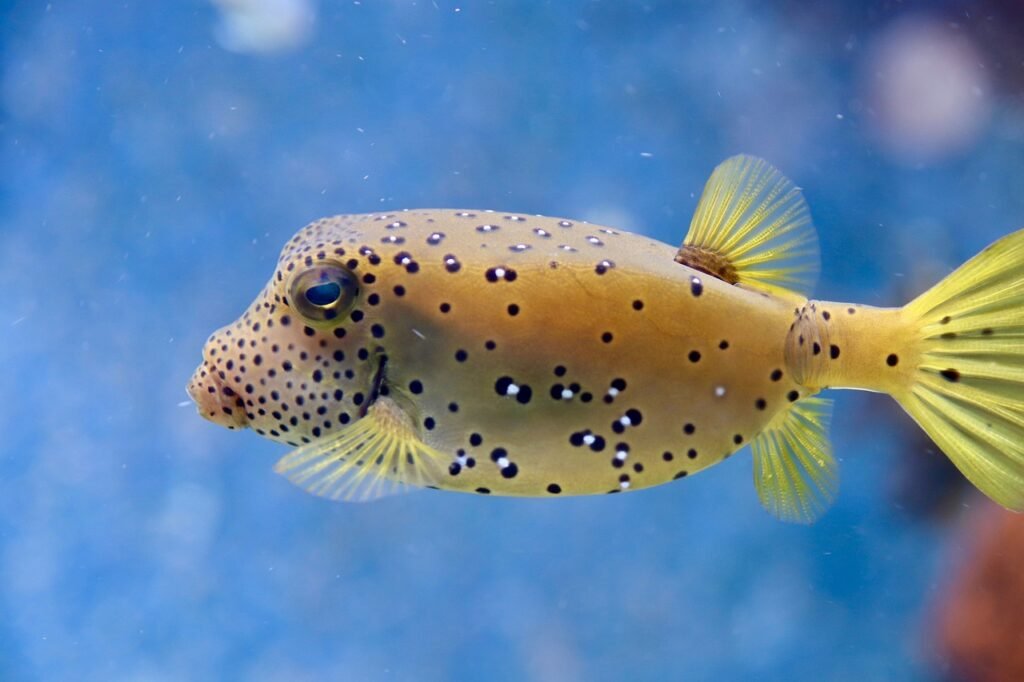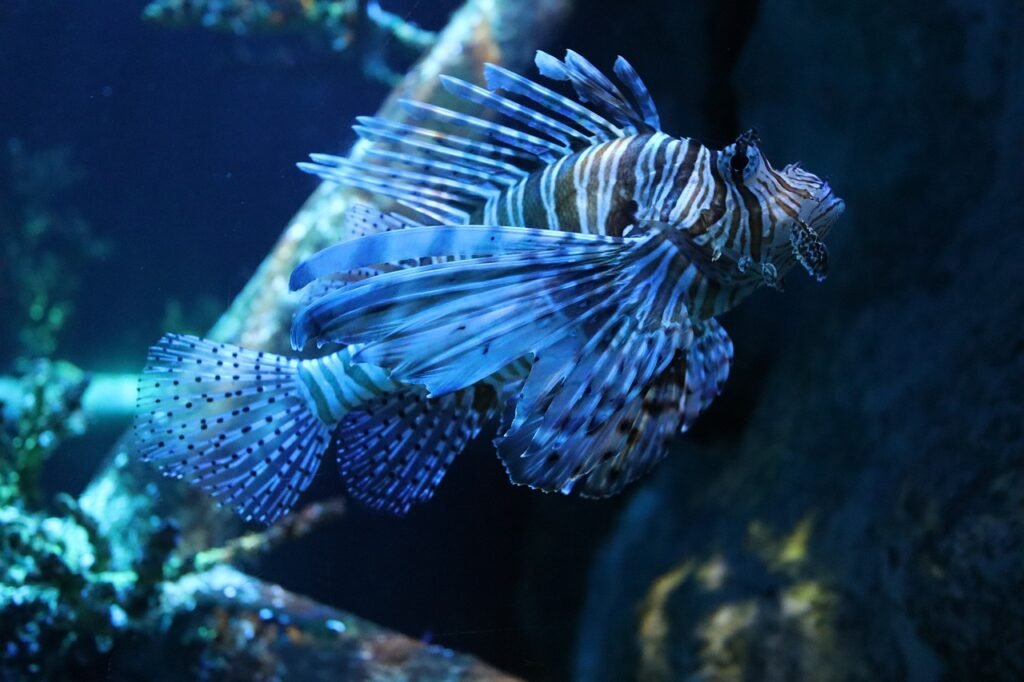The puffer fish going to the family Tetraodontidae are among the most exciting and strange creatures in the marine realm. These fish have baffled scientists, divers and nature enthusiasts due to their skill to inflate their figures as a defensive response. However, there is more to this amazing animal than its puffing behavior. Let us venture into the world of puffer fish and discover what makes them so wonderful.

1. The Inflating Defense Mechanism
An Uncommon Survival Technique
When threatened, the pufferfish can increase its size by inflating itself which is why it’s famously known for puffing up. It achieves this by sucking in water (or air if it is out of water) very fast thus enlarging its body up to several times bigger than normal. By doing so, it appears larger in size hence unappetizing to potential predators who might otherwise eat it as part of their meal plan because they find small prey less satisfying. Additionally, this action also makes fish rounder making it hard for enemies to swallow them alive since they cannot easily fit into their mouths.
How It Does This:
Unique anatomical features including special muscles and stretchable skin that can expand rapidly enable pufferfish inflate themselves. The stomach of a pufferfish is highly elastic so it can hold large amounts of water or air needed for puffing up. After danger passes by slowly releasing water/air until back at original form.
2. Toxicity: A Deadly Defense
Tetrodotoxin Potent Poison
Many species of pufferfish are toxic producing tetrodotoxin which ranks among most lethal poisons found within animals’ organs systems or skins but sometimes even flesh too may contain this powerful neurotoxin.. Tetrodotoxin happens to be one of the strongest known nerve toxins being about 1,200 times more toxic than cyanide. It may interest you that a single pufferfish can contain enough poison to kill thirty grown humans with no known cure.
Why Are They Toxic?
Pufferfish toxicity works as an excellent predator repellent because any creature that tries eating them will get poisoned resulting in serious illness or death. The fact is toxins do not come from puffer fish itself but are manufactured by bacteria present in its food chain.
3. Incredible Adaptability
Habitat and Distribution
Pufferfish inhabit various environments ranging from warm tropical oceans to brackish waters including certain freshwater systems too. They are commonly found around coral reefs where there is abundant food and hiding places for them; thus they have become highly successful creatures due to their ability to adjust easily within different surroundings.

Puffer fish: The Tetraodontidae Marvel Diet and Feeding Habits
These animals feed on a wide diet which consists of small invertebrates such as shrimps, crabs, worms etc., algae or even some shellfish like clams depending on what is available at particular time of year or location. Puffer fish have strong beak-shaped teeth used for breaking open hard shells hence making it possible for them to catch prey more efficiently while living under water. Despite appearing slow-moving, they can still hunt down other organisms successfully.
4. The Delicacy of Fugu
A Dangerous Gourmet Treat
In Japan, people consider certain species of puffers called fugu as delicacies though eating this kind of seafood could be risky business since part organs possess toxic substances capable of causing death if not handled properly during preparation. It’s worth noting that only trained chefs who hold special licenses should handle these types of meals where sometimes served raw thinly sliced alongside other dishes like hot pots among others.
The Excitement of the Encounter
Fugue is a Japanese delicacy, but it’s also one of the most risky dishes in the world. People like the danger, maybe as of it. Every year there are cases of poisoning from eating this fish; however, due to strict laws and proper cooking techniques there aren’t many deaths caused by such consumption.
5. Puffer fish in Popular Culture
A Symbol Of Danger And Safety
The puffer fish has become an emblem for both peril and caution within popular culture due to its unique properties. References have been made about its poisonous nature as well as distinctive physicality across various media forms such as cartoons or video games up until now even literature and art works too! This creature often represents something that can be mesmerizing yet terrifying at the same time showing beauty along with threats.
Kept In Aquariums As Well As Pets
Pufferfish are commonly found in stores selling fish tanks because they exhibit interesting habits while swimming around their containers which makes them attractive pets too besides being eye-catching themselves with vibrant colors patterns on skin pigmentation etcetera. However, keeping one as a pet may require special attention since these animals tend to get aggressive easily plus need specific care from owners who know what kind environment suits best for them.

6. Preservation Efforts & Threats To Survival
Effects Of Overfishing And Loss Of Habitat On Their Population Size
Like many other sea creatures puffers face risks brought about by overfishing together destruction of their habitats through human activities especially near coastal areas where people live or engage themselves into economic endeavors related waters e.g., tourism industry among others). Some places catch fish mainly used as food while others do so for commercial purposes like selling aquarium fishes thus leading to overfished areas which eventually results in decline numbers fished out each year thereby causing ecological imbalances within marine ecosystems inhabited by these marine animals.
What Is Being Done Towards Their Conservation?
Trying to conserve pufferfishes involves controlling fishing activities targeting specific species alongside safeguarding natural homes found within marine parks reserves sanctuaries etcetera.. For example, Japan regulates catching and preparing fugu so that only sustainable methods are used throughout its production chain from sea or river where it was caught up until being served on table ensuring no harm caused either to the environment or future generations by this practice alone. In addition, preserving reefs made of corals through responsible trade practices involving stores selling aquarium fishes can greatly contribute towards saving different varieties belonging to the tetraodontidae family.
Conclusion
With unique defense mechanisms, high level toxicity and great adaptability – the Tetraodontidae family is truly an amazing wonder of the underwater world. People still find puffer fish interesting whether they are seen as a culinary delight or danger sign or even kept in fish tanks for observation purposes because these creatures never stop fascinating us. As more discoveries about them continue being made; let’s not forget how important these organisms are within our oceans hence need protect them better so that future generations may also have chance know what it feels like coming across such wonderful creations living beneath waves. Meeting one such beauty is not just about knowing species but also understanding interdependence between various forms life existing around waters where we live today.

